| EXPLANATION OF GARDENS BY THE BAY
滨海湾花园讲解:
各位贵宾,大家好,我是你们今天的导游,我叫xxxx,你们可以叫我xxx导。容我先来点一下人数,非常好,都到齐了。欢迎来到新加坡的标志性景点——滨海湾花园。整个滨海湾花园占地101公顷,分为三大花园:滨海东,滨海中和滨海南,其中滨海南花园占地面积最大54公顷,我们现在就处在滨海南花园。

首先跟大家介绍这棵树,它叫雨树(rain
tree),又叫“含羞树”和“五点钟树”,外形像一个伞。新加坡很多地方都有种植,在樟宜机场出来的快递公路两旁就种了很多壮大的雨树。它有强大的储水功能,在天空下雨和夜幕降临之时,叶子会卷起来,把水汽凝结。雨过天晴和太阳升起之时,叶子又会慢慢舒展,把储存的水滴洒落,就形成了类似下雨的自然现象。它又像一个大号的含羞草,在烈日当头的炎夏之季,雨树能完美的遮挡紫外线,很好的起到遮阳作用。另外,新加坡20分的银色硬币上,刻印的就是雨树哦,它被奉为新加坡的国树。
而另外一边也是雨树,但是它的叶子是金色的,称为黄金雨树。

树上有鸟巢厥,厥类植物。
树下面这一堆是老虎兰,它属于本土的一种野生胡姬花,它的根茎像蛇的身体,花瓣像老虎的斑纹。老虎兰一般
2 - 4
年开一次花。你们知道吗?告诉你们一件趣事,新加坡的花也怕输,一看到下雨就开花,因为新加坡长期日晒,雨水量比较少,这些植物也怕没有后代,怕错过了一场雨又要等很久,所以新加坡的气候有时会打乱开花的时间。
这是一颗凤凰木,如果开花全部都是红花,很美丽!它属于蕨类植物。

贝叶棕:蕨类。以前僧侣是把经文刻在叶子上面,佛教有名的“贝叶经”就是由贝叶棕的叶片制作而成。只要有热带地区,有佛教的地方就有贝叶棕,有人认为它是一种民族文化的标记树!贝叶棕一生只绚丽一次,几十年开花一次,花期可以维持一年。贝叶花开在树顶上,一串串奶油色的小花,果子掉一地,很是漂亮!

风车子:泰国原产地。攀岩植物,外形很特别,像一把梳子又像一条毛毛虫。
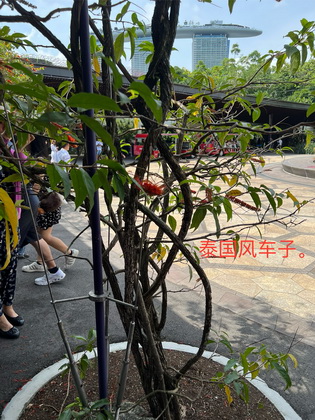


擎天树
整个滨海南花园一共有18颗大树,我们也叫它们为擎天树。分别分布在金花园三颗,银花园三颗,中间区域是擎天树群,有十二颗大树,一会儿我会带大家过去参观。这是我们等下要走的路线图。
这个区域就是金花园,它长的是黄色的花,所以叫金花园。
另外那个银花园长的是白色的花。
中间那12颗大树则是五颜六色的花。擎天树表面的绿色植物墙种满了近16万株植物,包括蕨类、附生植物和兰花。它们就像是一个大号的“空气净化器”,吸收二氧化碳,释放氧气。树干上的太阳能电池板可以吸收太阳能,为晚上的灯光秀供电。树上还有烟囱,这些烟囱还能收集雨水,用于花园内的植物灌溉和冷室提供降温冷气。擎天树的设计不仅仅是为了好看,还结合了这么多的环保功能,体现了新加坡对可持续发展的承诺!


这只威武的公牛它是美国银行在2015年赠送给新加坡50周岁生日礼物。由一名美国雕塑家打造。
还有一头冲刺的公牛在另外一处,是意大利雕塑家制作。寓意希望新加坡的经济像牛市一样,牛气冲天,红红火火!
 
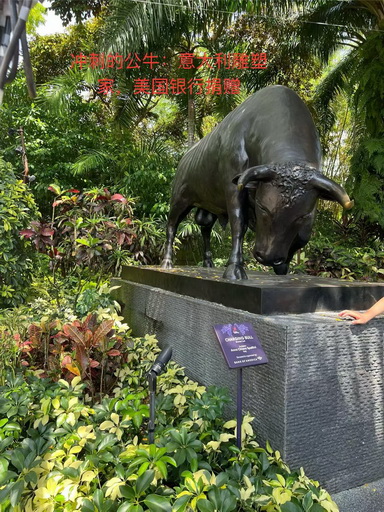
公牛后面的三颗小树:发烧树,属于豆科植物,生长在沼泽地,源于非洲。当时那个区域很多携带病毒的蚊子,叮咬到当地居民就会发烧,那边居民也没有科学知识,他们都归咎于这种树,说是这种树所祸害,所以发烧树的名字就是这样来的。但是要注意,这棵树干上的黄色粉末不要触碰,怕有些过敏体质的人会过敏。
两颗樟宜树:2015
李光耀去世为了纪念李光耀而种下左边这棵树,后来怕他孤单,又种了右边这颗来陪伴,纪念李光耀夫人




(樟宜树:名贵木材,属于豆科植物,原产于本地的原始森林。曾经二战时,有一颗樟宜树在樟宜地区在图表上标记为地形标志,结果被日军当成炮轰新加坡瞄准点,后来被英军砍掉。现在武吉知马自然保护区,樟宜地带和新加坡植物园还能找到)
(后面有峡谷石林,游乐场,翠鸟湖,吃沙爹地方)
这个方向走!
展板上面的雨树,以前国家发展部部长马宝山,2007
在这里动土,奠基开始建设滨海湾花园。

猴面包树:源于非洲,外形像一个倒栽树,果子远看像老鼠近看像面包,可以存活上千年!它全身是宝,树干有储存水的功能。叶子可以煮来当蔬菜吃,花可以作饮料和糖果。果子里面是淀粉,一粒一粒花生米一样,非洲人用这个当主食。树干纤维可以做绳索或手工艺品。


黄花炖驻木不是雨树,印尼人拿来染加沙

这片区域都是木棉树(攀枝花)这里有着不同品种,木棉树又叫酒瓶木棉,美人樱等等….
由于木棉的叶子比较大、树型比较阳刚,所以也叫英雄树,相比之下,叶子较小,树型柔美的就叫美人樱。开的花像樱花,花撑开了很多棉絮,可以用于工业棉,如枕头的棉和女孩护肤棉。种子可以提炼为食用油或工业用油。通常树身长满了刺,有的老了树身就没刺了。

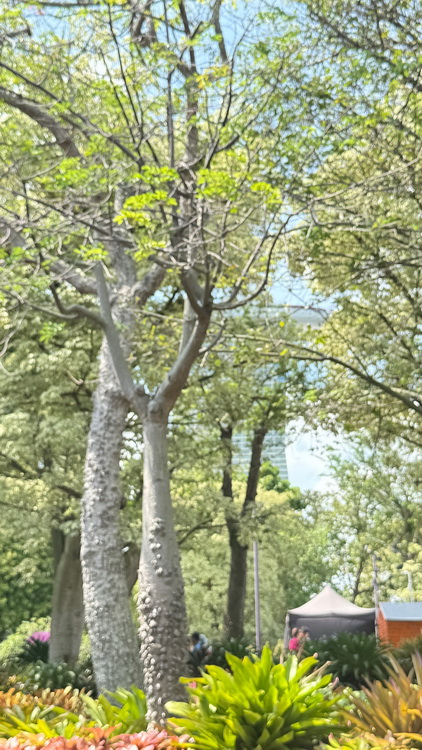
蚂蚁在树上(花穹入口):作者翁锡里新加坡人,蚂蚁是不锈钢材质。好奇的蚂蚁似乎在努力工作,非常受小朋友喜欢的作品。


金丝楠木狮子(下面):名贵的金丝楠木



看海讲诉:
这里有华穹Flower
Dome和云雾林Couldy Forest!
世界上最大的玻璃温室(健力士世界纪录保持者),种植着来自五大洲的植物。保持在23-25摄氏
75个奥林匹克规格的游泳池容量,花田厅可容纳1000人
四季更换-主题-花展比如郁金香、樱花,菊花、圣诞花展等等
花穹
花穹是世界上最大的无柱温室,世界上最大的玻璃温室(健力士世界纪录保持者),种植着来自五大洲的植物。体积相当于75个奥林匹克规格的游泳池容量,花田厅可容纳1000人。这里一年四季都会更换主题花展,比如郁金香、樱花,菊花、圣诞花展等等。温度也非常凉爽,保持在23-25摄氏度,适合大家观赏和放松,这里也是拍照打卡的好地方哦!
云雾林
云雾林里面的主角是35米高的室内瀑布,水雾弥漫,凉爽宜人!游客可以搭乘电梯直达山顶,沿着悬空步道(Cloud
Walk)和森林步道(Tree Top Walk)缓缓下行,一览丰富的植物和独特的景观。云雾林的湿度为80%-90%,主要展示生长于马来西亚沙巴的京那巴鲁山,非洲以及南美洲海拔1000-3500米高热带山地地区植物。这里有超过400个品种的植物,有的可都是珍稀品种,比如猪笼草和水晶兰。有些植物甚至是地球上濒临灭绝的哦!
对面是滨海湾东,正在在修建建国先贤纪念园,滨海湾中则是新加坡摩天观景轮那片区域。
这片不是海,是新加坡第15个蓄水池,它是由新加坡河和加冷河交汇而来,这边都是淡水了。右边有一个滨海堤坝。
走到这个区域,会有电频观光车,要注意安全,同时提供资讯,如果贵宾走累了,可以乘搭园内的观光车来游览,$3一位。
花钟(走廊与擎天大树之间):AP爱批表赠送,作为2015年新加坡50周岁生日礼物。电子钟接收GPS卫星信号,保持时间准确。7米宽,有20多种彩色植物当调色板。

光耀腾:垂直植物(和李光耀没关系,长出来像帘子一样很美)

炮弹树:它是先结果后开花,果臭花香,开的花像莲花,印度教拿莲花供奉神灵,印度教也把它当圣树看待,广泛种植在庙宇周围,在供奉象神的马里安曼兴都庙附近就有种植。


卡拉巴树:葫芦瓜的家族,壳很硬,可以做盛水的葫芦瓢或乐器,果肉可以吃。

介绍擎天树群:12颗大树,
树冠很多颜色,它们高达50米,最高的擎天大树有16层楼高。华侨银行空中走廊(OCBC
Skyway),全长128米,高度22米,相当于7层楼。站在上面,你们可以俯瞰整个滨海湾花园,甚至远处的滨海湾金沙酒店和新加坡摩天观景轮也一览无遗。
走廊的票价是成人14新币/儿童10新币。虽然需要爬楼梯,但相信我,绝对值!想拍大片的朋友,建议等到傍晚,夕阳映衬下的擎天树特别梦幻(OCBC走廊小雨不开放)
灯光秀时间是每晚7:45和8:45准时开始,有68个喇叭,音乐和灯光配合得天衣无缝,仿佛整个擎天树都在跳舞!
鸡蛋花树:花是黄色+白色,像鸡蛋。淡香味。早期用来做花圈叫死人花,马来人也会种在坟墓旁。为了去掉这种晦气,政府就配种出来了红色鸡蛋花,更加好看。它产于夏威夷,常与爱情和浪漫联系在一起。若女性把鸡蛋花佩戴在右耳上,通常表示她没有伴侣,可能在寻求爱情;而佩戴在左耳,则表示她已经有伴侣或已经结婚。如果两边都有戴,证明,它就是个装饰品啦


史迹花园
史迹花园
• 通过植物的故事,探索新加坡的历史和文化。
圃 四个主题花园:
印度花园:最具创意(花卉图案)
中国花园:最美不胜收(模仿自然的艺术)
马来花园:最诱人的(食用植物)
殖民地植物园:香气最浓(香料和经济作物)
_)
花园艺术
• 来自世界各地的200多件雕塑。
• 这些雕塑给游客带来启发并将他们与大自然联系起来。
滨海湾花园(Gardens by the Bay)是新加坡的一大亮点,除了其标志性的超树(Supertree
Grove)和冷气花房(Flower
Dome)等景点外,它还拥有三个代表新加坡三大族群历史和文化的“遗产花园”:印度人遗产花园、马来人遗产花园和中国人遗产花园。每个遗产花园通过独特的植物和景观设计,展示了相应族群的传统与历史。
### 1. *印度人遗产花园 (Indian Garden)*
印度人遗产花园展现了印度文化在新加坡的发展与影响。这个花园专注于与印度的历史、宗教和节庆相关的植物,展示了印度在新加坡的文化印记。
*特色植物和树木:*
- *香料植物:如姜、香茅和辣椒*,这些植物是印度料理中的常见食材。
- *印度橙树*(Indian Orange):与印度的传统医药体系(如阿育吠陀)和饮食文化密切相关。
- *印度月桂*(Indian Bay Tree):这种树木在印度常被用作烹饪香料。
- *槟榔树*:印度和东南亚文化中常见的植物,也与传统的咀嚼习惯相关。
这个花园的设计元素也体现了印度传统的宗教和节庆习惯,如印度教的圣树——*菩提树*,象征着智慧与觉醒。
### 2. *马来人遗产花园 (Malay Garden)*
马来人遗产花园反映了马来族群的传统文化、习俗和与自然的关系。花园里的植物多与马来人的日常生活、传统医学和信仰体系相关。
*特色植物和树木:*
- *椰子树*(Coconut Tree):椰子在马来文化中具有重要地位,它不仅是日常饮食的一部分,还常见于传统建筑中。
- *香兰叶*(Pandan Leaf):用于马来美食中的香料,尤其在传统甜点和菜肴中。
- *热带水果树:如榴莲、芒果和龙眼*,这些都是马来食物中常见的水果。
- *柚子树*:马来文化中,柚子常用于传统节庆和仪式。
该花园还体现了马来人的居住方式与环境的和谐共生,设计上有典型的马来村屋结构(如*Bumbung*屋顶),以及反映马来传统工艺的装饰元素。
### 3. *中国人遗产花园 (Chinese Garden)*
中国人遗产花园突出了中国文化在新加坡的深厚根基,特别是在农耕与传统节庆方面。花园通过植物和景观的选择展示了中国古老的植物学知识和与自然的联系。
*特色植物和树木:*
- *梅花*(Plum Blossom):梅花是中国文化中象征坚韧与纯洁的花卉,常出现在中国传统园林中。
- *竹子*(Bamboo):竹子在中国文化中象征着谦逊与节操,且有广泛的用途,从建筑到食品、手工艺品等。
- *茶树*(Tea Plant):茶文化在中国悠久的历史中占有重要地位,茶树的种植也代表着中国的农业传统。
- *桂花树*(Osmanthus):桂花是中国传统文化中的象征,特别是在秋季,香气扑鼻的桂花常常成为节庆和婚礼的代表。
此花园中的景观设计灵感来自中国传统园林艺术,特别是通过水景、石景和古典雕塑来传达中国园林的诗意与宁静。
### 总结:
滨海湾花园通过印度人、马来人和中国人遗产花园的精心设计,不仅展示了每个族群的植物和文化,还融入了与自然和环境的深厚联系。每个花园都有独特的植物和树木,反映了各自文化中的传统智慧与生活方式,是新加坡多元文化的象征。

印度园
indian culture
阿育吠陀(Ayurveda)是起源于印度的一种传统医学体系,其历史可以追溯到数千年前。“阿育吠陀”一词源自梵文,其中“阿育”(Ayus)意为“生命”,“吠陀”(Veda)意为“知识”或“科学”,合起来即“生命的科学”或“生命的知识”。
核心理念
阿育吠陀医学基于整体健康的理念,注重身体、心理、情感和精神的平衡与和谐。其主要特点包括:
1. 三大能量(Doshas)理论:
• 风能(Vata):与空气和空间相关,控制运动、呼吸和神经系统。
• 火能(Pitta):与火和水相关,掌管代谢、消化和体温调节。
• 水能(Kapha):与水和土相关,负责体力、免疫力和结构支持。
阿育吠陀认为,每个人的体质(Prakriti)由这三种能量以独特的比例组合而成,健康状态取决于它们的平衡。
2. 疾病的原因:
阿育吠陀认为,疾病是由于三大能量的不平衡、饮食不当、生活方式不健康以及内外部压力引起的。
3. 预防为主:
它强调通过健康的饮食、规律的生活方式、清洁身心的方法(如瑜伽和冥想)来预防疾病。
治疗方法
阿育吠陀医学包括多种自然疗法,具体治疗因人而异,常见方法有:
• 草药:使用草药和植物提取物,例如姜黄、三果(Triphala)、阿育吠陀茶等。
• 饮食疗法:根据体质选择适合的饮食。
• 排毒疗法(Panchakarma):通过清洁身体(如按摩、蒸汽疗法、放血等)排除毒素。
• 瑜伽和冥想:促进身体与精神的平衡。
• 按摩与油疗:使用药用油进行身体按摩,改善循环和放松。
现代作用
在现代医学领域,阿育吠陀受到广泛关注,尤其在整体健康、慢性病管理以及预防医学方面。尽管其某些理念未被科学完全验证,但其自然疗法和整体健康观念对现代医学具有一定的补充作用。
注意:在实践阿育吠陀医学时,应结合现代医学意见,特别是在严重疾病或紧急状况下。
缅甸之光:印度狮子勇旁边。叶子像手帕黄色种的叶子还还没开的,吸收阳光后会变绿色

两颗榕树并在一起,它不会开花,是无花果树。它的根不可以扎在地上,很容易扎地而长。


糖棕树:生产海底椰,很甜可以做酒


象神庙在加东328号,供奉神民的东西(黄姜,檀香木…)
使君子:当年刘备的官衔叫使君,他儿子闹肚子有蛔虫,就吃了这个花就好了,是专门排泄肚子的蛔虫。后来就把这个花就叫使君子,使君的儿子。

菩提树:其实弥勒佛是在龙华树下悟道Wùdào,不是菩提树。

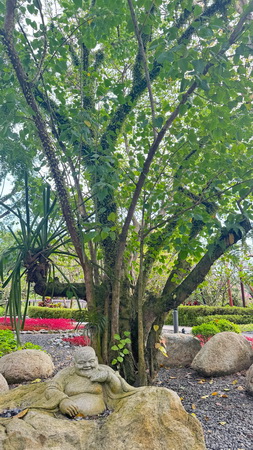 菩提树 菩提树
释迦摩尼才是在菩提树下悟道,所以这里的弥勒佛石雕应该是放错地方啦。
菩提树的叶子是尖尖的。
菩提树(Sacred Fig / Ficus religiosa):
菩提树与佛教密切相关,被认为象征智慧与启迪的“光”。Qǐdí
de “guāng”
缅甸是一个以佛教为主的国家,菩提树可能也具有深刻的文化与宗教意义。
阿脖乐:源于泰国。开黄色的花,皇室节庆常用的花。
长豆子可以治胃酸,豆科食物一定要煮熟,不熟的吃了会中毒。

铁树:有雄雌之分,可以从中间的结构判断。母的开圆球状花,公的开柱状花。铁树不开花,恐龙时代就已经有了。

龙眼树

中国园:圆形拱门
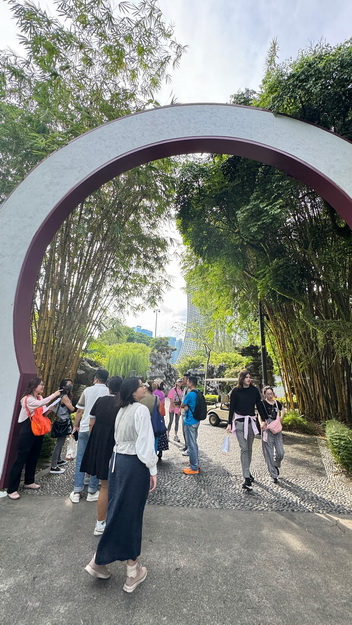
垂柳茶树;Chuíliǔ
cháshù
叶片有香味,泡茶很好喝,也可以做茶树油,澳大利亚品,来取代柳树。
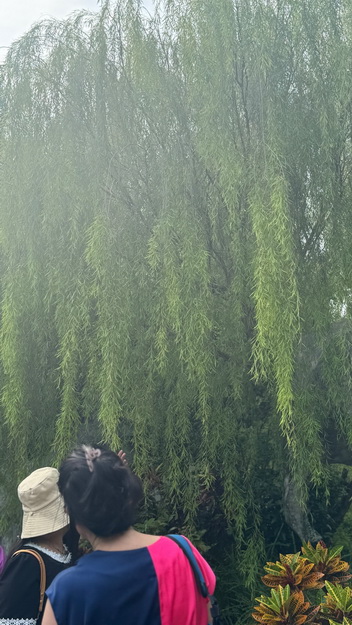
您提到的这种树应该是垂柳茶树(Weeping Tea Tree),学名 Leptospermum
brachyandrum,
是一种原产于澳大利亚的茶树属植物。以下是它的一些特征和用途:
特征
1. 外观:
• 垂柳茶树外形优雅,枝条细长、下垂,形似柳树,因而得名“垂柳茶树”。
• 叶片狭长Xiácháng,常带有浓郁Nóngyù的香味,尤其在叶片被揉碎或压碎后香气更明显。
2. 花朵:
• 它开小而精致的白色或淡粉色花朵,非常美观,常吸引蜜蜂和其他授粉昆虫。
3. 生长环境:
• 适应性强,能在沙质土壤Shā
zhì tǔrǎng和湿润Shīrùn的环境中生长。
• 抗旱性能优越,同时能够耐受湿地条件。
用途
1. 茶叶制作:
• 垂柳茶树的叶子可以采摘、晾干后泡茶,茶具有独特的香味,清新爽口。
• 其茶叶被认为具有一定的抗氧化和舒缓功效,对健康有益。
2. 茶树油提取:
• 叶片和枝条可以用来提取茶树油(Tea Tree Oil),这种油因其抗菌、抗炎、抗病毒特性广泛应用于医疗和美容领域。
• 茶树油常用于治疗皮肤感染、伤口、痤疮等,还可以添加到护肤品、洗发水中。
3. 观赏植物:
• 由于其垂柳般的外形和美丽的花朵,垂柳茶树是一种非常受欢迎的观赏植物,常用于园林景观设计和庭院绿化。
• 它的形态优雅,能为花园或公共绿地增添自然美感。
4. 环境用途:
• 垂柳茶树可以作为护坡树种,用于防止水土流失。
• 它还可以种植在湿地或水边,帮助改善生态环境。
替代柳树的优势
• 低维护:相比柳树,垂柳茶树的生长更容易管理,适应性强,不容易侵占其他植物的生长空间。
• 抗病虫害:它对多种病虫害具有天然抵抗力,减少了化学处理的需求。
• 额外价值:除了观赏价值,垂柳茶树还能提供茶叶和茶树油,具有更高的经济与实用价值。
这种树集观赏性与功能性于一身,非常适合园林栽种和商业开发。
背井离乡雕塑,诉说着对故土的思念Gùtǔ
de sīniàn



山茶树:山茶花(日本品种)

黄连木:原产于中国,纪念孔子,传说孔子弟子守墓多年,种植了楷木Kǎi
mù,并用楷木雕刻了孔子和师母的形象。
嫩叶Nèn
yè有香味,经加工后可做茶叶。
粽子油可以做肥皂,润滑油和肥料等。Zòngzǐ
yóu kěyǐ zuò féizào, rùnhuá yóu hé féiliào děng
马来园
在这个马来遗产花园中,我们将看到对我们的生活非常有用的果树,
这突出了果树和人类共存和相互支持的早期时代。
莲雾:也叫水瓮,种植一种好吃水分多的水果,台湾的更好吃。
莲雾(学名:Syzygium samarangense),是一种属于桃金娘科(Myrtaceae)的热带常绿乔木或灌木植物,原产于东南亚一带。莲雾常被称为“水瓮”或“水蒲桃”,这些名字可能与其果实形状和含水量有关。以下是一些关于莲雾的关键特点:
1. 外观特点
• 树形:莲雾树通常为中等高度,树冠浓密,枝叶繁茂,适合种植在热带地区。
• 叶子:叶片呈革质,椭圆形或长椭圆形,边缘光滑,表面深绿。
• 花朵:莲雾的花为淡黄色或淡绿色,簇生,具有多根细长雄蕊。
• 果实:果实呈钟形或梨形,外皮光滑,有亮泽。
常见果皮颜色包括粉红色、红色、绿色或白色,果肉脆嫩,含大量水分,味道清甜或略带酸味。
2. 生态习性
• 莲雾喜温暖湿润的环境,适宜在热带和亚热带地区生长,耐高温但不耐寒。
• 需要充足的阳光和排水良好的土壤。
3. 主要用途
• 果实食用:莲雾果肉多汁,口感清脆,常被作为鲜食水果。也可以用来制作果汁、沙拉或蜜饯。
• 观赏用途:莲雾树形优美,可作为庭院绿化或果园种植。
• 药用价值:在传统医学中,莲雾的果实、叶子和树皮常被用作药材,有助于缓解发热、消炎或降血糖等。
4. “水瓮”之称的由来
莲雾之所以被称为“水瓮”,可能与其果实的形状和高水分含量有关:
• 形状:果实略呈瓮状,与水瓮的形态相似。
• 含水量:果肉含水量极高,食用时多汁爽口,给人一种“水盈盈”的感觉。
莲雾作为一种广受欢迎的热带水果,在东南亚、台湾、海南等地种植广泛。其清爽的口感使其深受喜爱,被誉为消暑佳品。

槟榔树:槟榔也就是老叶,细长的四颗

面包树:源于马来西亚。
木质可做建筑或独木帆。果子外观有点像菠萝蜜Bōluómì,马来的面包果。
马来西亚的面包果树,学名为 Artocarpus altilis,是一种属于桑科
Sāng kē(Moraceae)
的热带植物,常见于东南亚和太平洋岛屿地区。
在马来语中被称为 “buah
sukun”(面包果)。面包果因其成熟果实在烹饪后具有类似面包的口感和香气而得名,是一种重要的粮食作物和传统食材。
植物特征
1. 树木外观
• 面包果树是一种高大的常绿乔木,能长到 20 米高,树叶宽大、深裂,呈鲜绿色。
2. 果实特征
• 果实为圆形或椭圆形,直径Zhíjìng约
10-30 厘米,外皮带有绿色或黄色的小疙瘩状结构。
• 果肉为乳白色或浅黄色,质地致密。Zhídì
zhìmì dense texture
如何食用面包果
面包果是一种非常多功能的食材,可以以多种方式烹饪和食用。以下是一些常见的处理和食用方法:
1. 烘烤(烤面包果)
• 这是最经典的食用方式。将整个果实直接放在炭火上烤,直到外皮焦黑,果肉变软。
• 剥去外皮后,果肉会变得柔软而带有面包般的香气,通常直接食用或蘸酱。
2. 煮熟
• 将果实切成块后煮熟,可用来制作汤或炖菜。
• 常与椰奶、香料一起煮,风味浓郁。
3. 油炸
• 面包果切片后,可以像炸薯片一样油炸,成为一种香脆的小吃。
4. 制成甜点
• 熟果肉可被搅成泥状,用于制作布丁、饼干或面包等。
5. 烹制咖喱Pēng
zhì gālí
• 在马来西亚和印度菜中,面包果常被用作咖喱的配料,与肉类或椰奶一起炖煮。
营养价值
面包果是一种富含营养的食物,具有以下特点:
1. 高碳水化合物Gāo
tànshuǐ huàhéwù:是淀粉的优质来源,Diànfěn
de yōuzhì láiyuán
常作为米饭或马铃薯的替代品。High in carbohydrates
2. 低脂肪Dī
zhīfáng:适合作为健康饮食的一部分。Low in fat
3. 富含维生素和矿物质:Fù
hán wéishēngsù hé kuàng wùzh / íRich in vitamins and minerals
• 含有维生素 C、钾、钙和膳食纤维。Jiǎ,
gài hé shànshí xiānwéi Potassium, calcium and dietary fiber
4. 蛋白质来源Dànbáizhí:尽管含量不高,但其蛋白质比许多其他热带水果要丰富。protein
传统和文化意义
• 面包果在马来西亚和太平洋岛屿地区不仅是一种粮食作物,还具有文化意义。
• 在许多传统习俗中,面包果被视为丰收和生命力的象征。
结论
马来西亚的面包果树不仅提供了多样化的食用方式,还在传统饮食中占据重要地位。它是一种健康、实用且富有文化意义的植物。如果有机会,你可以尝试以不同方式品尝这种热带水果!

马来的东哥阿里:原来拿着拐杖的男士吃了这个就可以走路了。吃根茎。
东革阿里(Tongkat Ali),学名 Eurycoma longifolia,是一种来自东南亚的热带植物,
主要分布于马来西亚、印度尼西亚、泰国和越南等地。
它因其药用价值被广泛使用,特别是在传统医学中。以下是关于东革阿里的主要信息:
植物特征
• 属于苦木科 (Simaroubaceae) 的常绿灌木或小乔木,通常生长在热带雨林中。
• 东革阿里的根部是最常用的部分,被认为具有多种药用功效。
传统用途
在东南亚传统医学中,东革阿里被用作多种药物配方的成分,特别是在以下方面:
1. 提高男性活力
• 东革阿里因其潜在的天然提高睾酮水平的功效,被誉为“天然壮阳药”。
• 常用于改善男性性功能、精子质量和体力。
2. 增强体力和能量
• 被用作补品,帮助缓解疲劳和增强耐力。
3. 抗炎与抗氧化
• 具有抗炎和抗氧化特性,用于缓解身体炎症和促进免疫系统健康。
4. 缓解压力
• 传统上用于缓解压力、焦虑,并支持整体心理健康。
主要成分
东革阿里根部含有多种活性化合物,包括:Zàogān
• lèi huángtóng • kūn lèi huàhéwù • shēngwù jiǎn
• 皂苷
• 类黄酮
• 醌类化合物
• 生物碱
Saponins
• Flavonoids
• Quinones
• Alkaloids
这些成分被认为对提高睾酮水平Gāotóng
shuǐpíng、抗炎和增强体能有作用。Testosterone levels
现代应用
1. 保健品
• 东革阿里已被加工成各种形式的保健品,如粉末、胶囊、茶饮。
2. 运动营养
• 常被运动员使用,旨在增强体力和肌肉恢复。
3. 抗衰老
• 因其抗氧化Kàng
yǎnghuà特性,被认为对抗衰老有一定的帮助。Antioxidant
使用注意事项
虽然东革阿里被认为是天然补品,但在使用时应注意:
• 过量使用可能引起副作用,如失眠、头痛或焦虑。
• 患有慢性病或孕妇、哺乳期女性,应在医生建议下使用。
结论
东革阿里是一种在传统和现代医学中广受欢迎的植物,尤其以其助力男性健康和增强体能而闻名。然而,在使用任何草药补充剂之前,了解其正确用量和潜在风险非常重要。

各位贵宾,现在我们已经走完滨海湾花园的主要区域了。接下来是自由活动时间,大家可以选择登上擎天树的空中走廊,感受“空中漫步”的乐趣或者回到冷室细细欣赏花卉。也可以在滨海湾旁的美食广场尝尝新加坡的特色小吃,比如叻沙、沙爹等等。最后,我建议大家一定要留到晚上看灯光秀,那可是滨海湾花园最亮眼的压轴!
希望今天的讲解让大家对新加坡这个“城市花园”的设计和意义有了更深的了解。如果有问题,随时可以来找我!祝大家玩得开心!谢谢!
 |


_resize.jpg)
_resize.jpg) Marina Barrage
Marina Barrage _resize.jpg)
_resize.jpg)
_resize.jpg)


































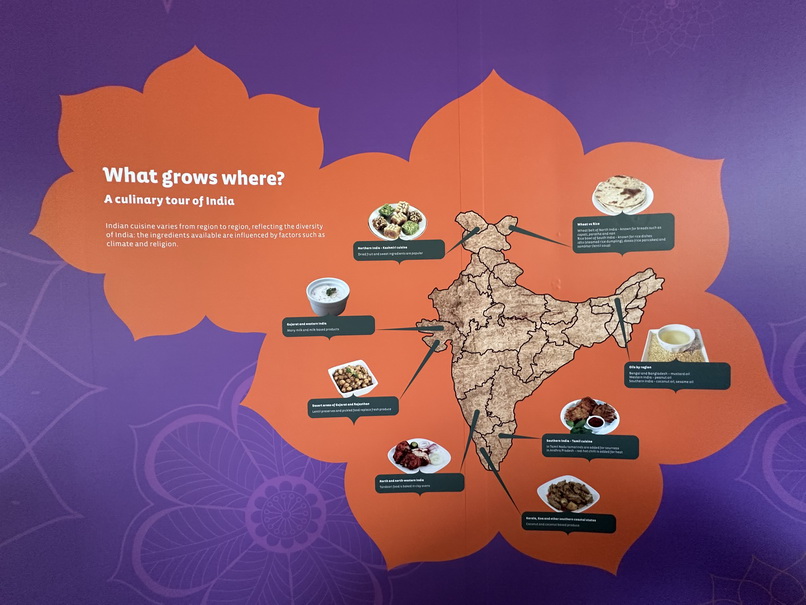

















 菩提树
菩提树













.jpg?itok=PvPRViER)